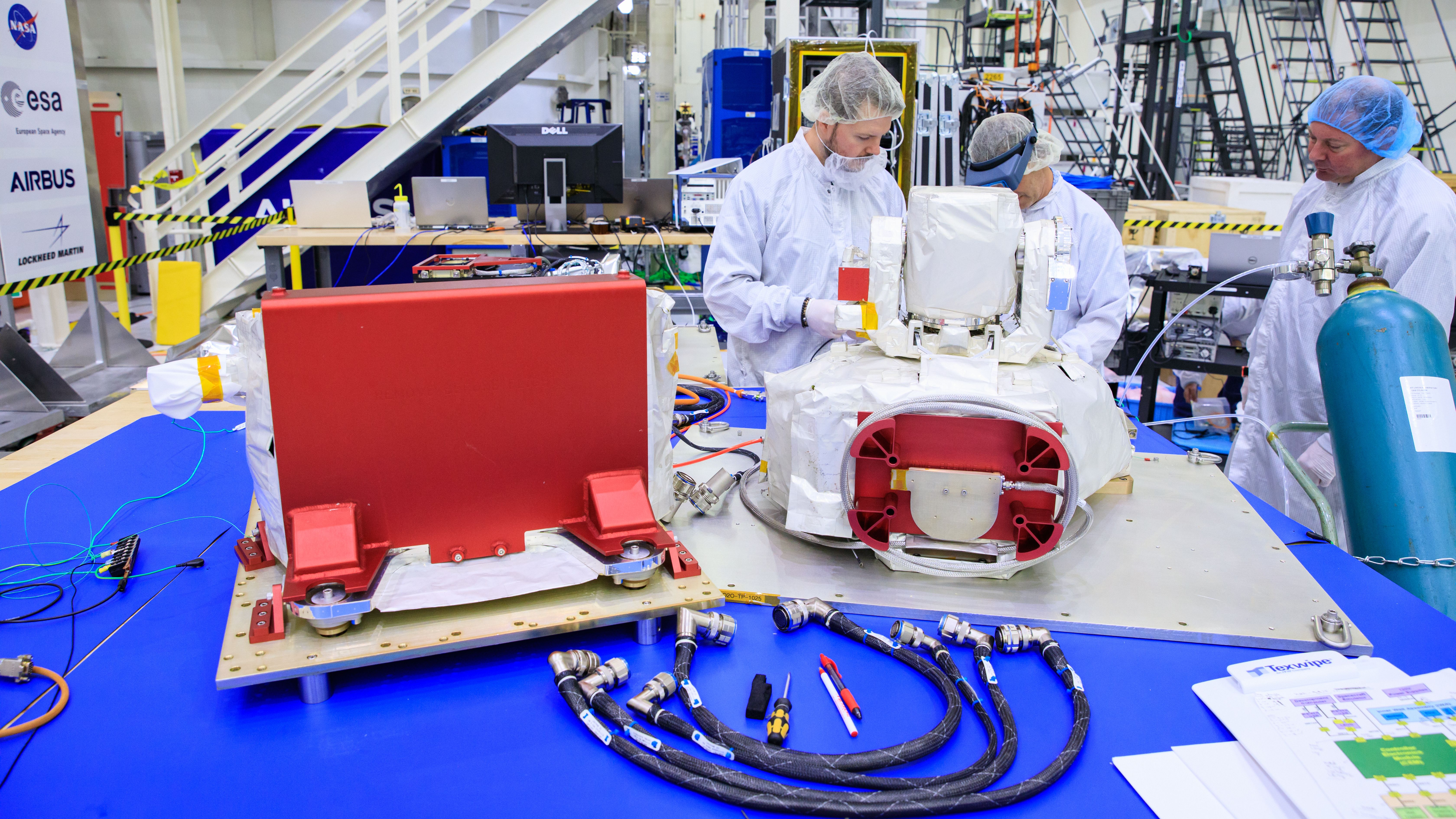New laser communications system arrives at NASA for Artemis 2 moon mission
Astronauts on NASA's next trip to the moon will be able to livestream their flight in HD.

NASA's new moon spacecraft is getting a next-generation communication system.
The Orion capsule undergoing preparations for the crewed Artemis 2 moon mission at NASA's Kennedy Space Center (KSC) in Florida recently received an essential piece of mission hardware.
A laser communication module, called the Artemis 2 Optical Communications System (O2O), was delivered to KSC for integration with Orion ahead of the round-the-moon Artemis 2 mission, which is expected to launch near the end of 2024. O2O uses laser technology to beam messages with data rates far greater than conventional radio transmissions and will vastly improve the speed and types of data transfers that the Artemis 2 astronauts can send back to Earth.
Related: Meet the 4 astronauts flying on NASA's Artemis 2 moon mission
O2O was developed at NASA's Goddard Space Flight Center in Maryland, with help from the Massachusetts Institute of Technology's (MIT) Lincoln Laboratory. The project was funded under NASA's Space Communications and Navigation (SCaN) program, which has completed successful laser communication demonstrations on multiple missions, including the Laser Communications Relay Demonstration (LCRD) in 2021 and the TeraByte InfraRed Delivery (TBIRD) mission in 2022. In addition, SCaN is sending the Integrated LCRD Low-Earth-Orbit User Modem and Amplifier Terminal (ILLUMA-T) laser communication relay to the International Space Station (ISS) later this year.
"At 260 megabits per second, O2O is capable of sending down 4K high-definition video from the moon," O2O project manager Steve Horowitz said in a June 13 NASA statement.
O2O will enable Artemis 2 astronauts to share their lunar journey with Earth in a new and unprecedented way. And the laser communications system will handle more than just the pictures and videos from crewmembers. It will be embedded in Orion's system infrastructure.
Get the Space.com Newsletter
Breaking space news, the latest updates on rocket launches, skywatching events and more!
"O2O will transmit and receive procedures, pictures, flight plans, and be a link between Orion and mission control on Earth," Horowitz said.
For the Artemis 2 mission, two ground stations were chosen in Las Cruces, New Mexico, and Table Mountain, California, to receive Orion's O2O data transmissions. Both locations were selected for their preponderance of clear skies. Excessive cloud coverage, NASA said, can affect the quality of laser communication data transmittance.
The successful demonstration of O2O on Orion during Artemis 2 could help the technology make its way into many more aspects of spaceflight, and enable a streamlined communications infrastructure on NASA's future missions to the moon and beyond, agency officials said.
Join our Space Forums to keep talking space on the latest missions, night sky and more! And if you have a news tip, correction or comment, let us know at: community@space.com.

Josh Dinner is the Staff Writer for Spaceflight at Space.com. He is a writer and photographer with a passion for science and space exploration, and has been working the space beat since 2016. Josh has covered the evolution of NASA's commercial spaceflight partnerships and crewed missions from the Space Coast, as well as NASA science missions and more. He also enjoys building 1:144-scale model rockets and human-flown spacecraft. Find some of Josh's launch photography on Instagram and his website, and follow him on X, where he mostly posts in haiku.









